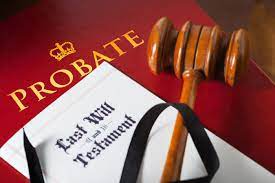
A GUIDE TO PROBATE ADMINISTRATION IN OHIO
The process of settling the estate of a loved one can be time consuming and emotionally draining. Finding your footing within the complex legal system can be a challenge, especially if you are unfamiliar with the process. In this blog post, we'll walk you through some key information to help guide you through the probate process with confidence.
Understanding the Probate Process
Probate is a legal process that ensures the rightful distribution of a person's assets after they have passed away. To start the process, you open an "estate" with the probate court. In general, an estate is classified in one of two ways: testate or intestate. Understanding this distinction is crucial because it dictates much of the probate process.
Testate probate applies when the individual has a valid will at the time of their death
Intestate probate occurs when they do not have a valid will at the time of death
To start the probate process, you will need the original death certificate and the original will (if there is one).
Identifying Estate Assets
Before the probate process can begin, it is essential to take stock of the estate's assets. This process often involves sifting through paperwork, such as bank statements, retirement account statements, deeds, titles and tax information, to compile an inventory of all known assets. Then as an estate is administered, there will often be additional assets located.
Eventually, after all of the assets have been located, a report, called an "Inventory", will be presented to the Court, listing the value of all of the assets in an estate. It is crucial to ensure the estate inventory is complete, as it will help to prevent possible legal battles and delays during the probate process.
Distribution of Estate Assets
After the Probate Court approves the list of assets presented in the Inventory, then it is time to determine who gets what. This is a complicated and often fraught process, as not every beneficiary or family member is happy with the outcome. This is also when Ohio law can produce unexpected results, which if not handled correctly, can lead to protracted disputes which often end up in litigation. But once any of these issues have been resolved, it is time to finalize and close the estate. After any required taxes, debts and fees have been paid, the remaining assets will be distributed to their rightful beneficiaries and a report of the final distribution will be filed with the Court. Once the Court approves the report, the estate can be closed.
While this entire process can be overwhelming, understanding how it works can make it a bit less daunting. Some aspects of the process may be more complicated than others, but with the help of a professional probate attorney, your loved one's wishes can be carried out correctly. Take some time to consider this important step and ensure that you are adequately prepared. With the right partner, you can navigate probate administration in Ohio worry-free.
Ready to get started with probate administration? Contact one of our probate attorneys or download our free Probate Checklist here.
About the Author
Having earned her law degree in 1997, Laura Blumenstiel has nearly three decades of legal experience. She is deeply committed to providing compassionate and effective legal services for our clients. Each day, she finds fulfillment in meeting with clients and meticulously crafting trusts and estate planning documents. Additionally, she works diligently on estate administration through probate court proceedings. She's passionate about helping individuals and families plan for the future and guiding them through the probate process during difficult times. She strives to make a genuine connection with all her clients.
